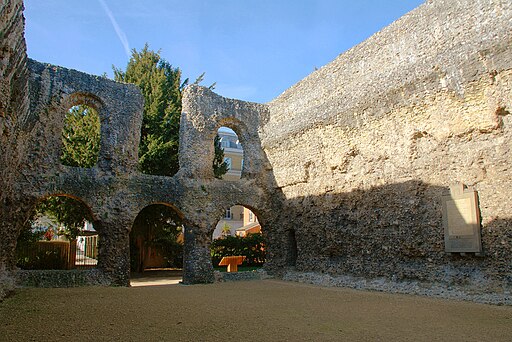1. The Reading Museum
The Reading Museum, located In the neo-Gothic Town Hall, provides a glimpse into the town’s history from its inception as a Saxon Settlement, all the way to its transformation into a center of industry, and up to the present day. You can travel through time and explore the town’s past via many exhibits on display in the museum.
The area also hosts an exhibit presenting the Roman town of Calleva Atrebatum (Silchester), which contains intriguing objects such as a realistic bronze eagle manufactured during the 1st or 2nd century and located in 1866. Another highlight is the collection of excavated items from Reading Abbey, as well as the sole replica of the Bayeux Tapestry in the country, which showcases the Norman invasion of Britain.
The Windows Gallery features artistic works created by Jacob Epstein and Auguste Rodin, whereas the Huntley & Palmers Gallery showcases the biscuit-making industry that played a significant role in the growth of Reading’s economy during the Victorian era. If you need affordable accommodation during your Reading trip, you can get a Reading service apartment.
2. Forbury Gardens
A short distance from the train station is Forbury Gardens, a tidy public park located on the outskirts of the former Reading Abbey. Details regarding the abbey will be discussed later.
Following the dissolution of the abbey during the 16th century, the area remained unoccupied and later served as gun platforms during the English Civil War, and as a training ground for military maneuvers during the Napoleonic Wars.
During the mid-19th century, this park was transformed into a public space. In 1886, a striking monument known as the Maiwand Lion was erected to commemorate the soldiers of the 66th Berkshire Regiment who passed away in the Battle of Maiwand in Afghanistan in 1880. The park also has a charming bandstand and spacious lawns that attract many office workers during lunch breaks on bright days.
3. Abbey Ruins
Located On the southeast border of Forbury Gardens, amid contemporary structures, lie the remains of the Reading Abbey that dates back to 1121 when it was established by Henry I. Following the suppression of monasteries throughout the British Isles during the Dissolution of the Monasteries by Henry VIII in 1538, the abbey met a similar fate, with Hugh Cook Faringdon, its last abbot, being executed by hanging, drawing, and quartering.
Despite being abandoned for nearly half a millennium, the remains of the complex are recognized as Grade I listed and visitors can explore what remains of the chapter house.
The hospitium, an ancient dormitory originally built for pilgrims, has survived intact over the years. Today, it has been repurposed into a nursery for children. Additionally, the Gothic abbey gateway located on Abbey Square has a rich history – it used to be a school attended by the famous writer Jane Austen. In 1861, the gateway was restored by the esteemed architect George Gilbert Scott.
4. Basildon Park
Basildon Park is an impressive country house situated in the Chiltern Hills, near Reading. The house was designed by John Carr in the Palladian style and was built between 1776 and 1783 using Bath stone, which gives it a beautiful honey color. During the Second World War, it served as a prisoner-of-war camp, and by the 1950s, the house had fallen into disrepair and was earmarked for demolition. However, Lord and Lady Iliffe undertook a massive restoration project, rescuing the splendid house from destruction.
5. Silchester
You can personally visit Silchester, which is a free site belonging to English Heritage that is located ten miles to the southwest of Reading.
The urban center of Rome was constructed during the latter part of the first century, succeeding a pre-existing Iron Age oppidum, and was left unoccupied between the 5th and 7th centuries.
At the beginning of the 20th century, the polygon-shaped city walls were excavated for the first time, revealing their structure.
